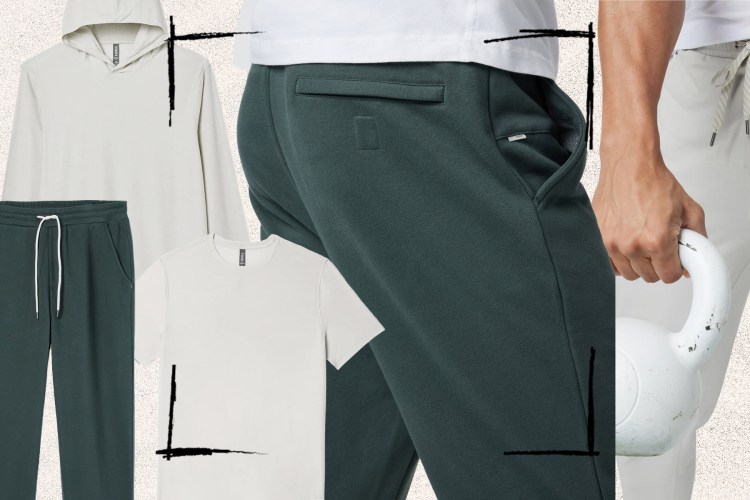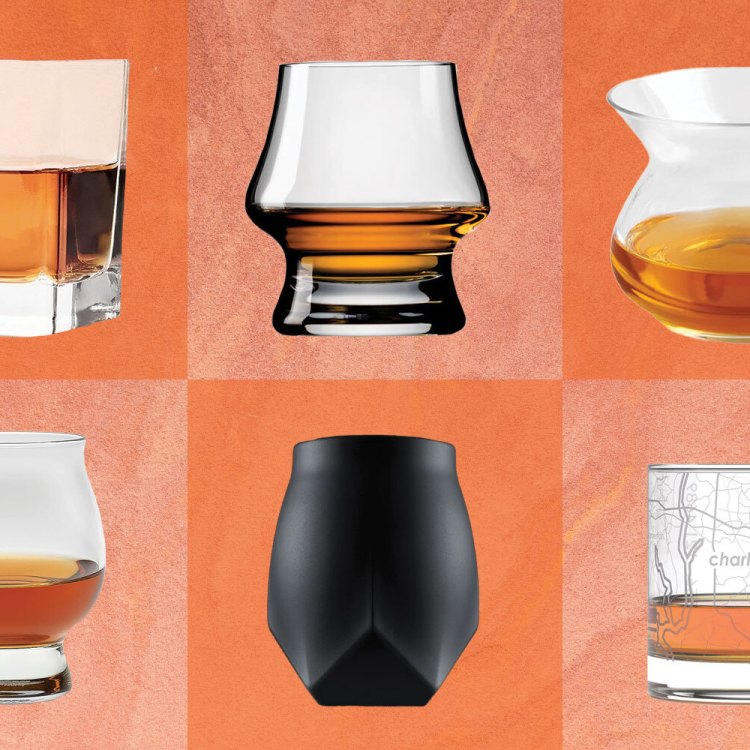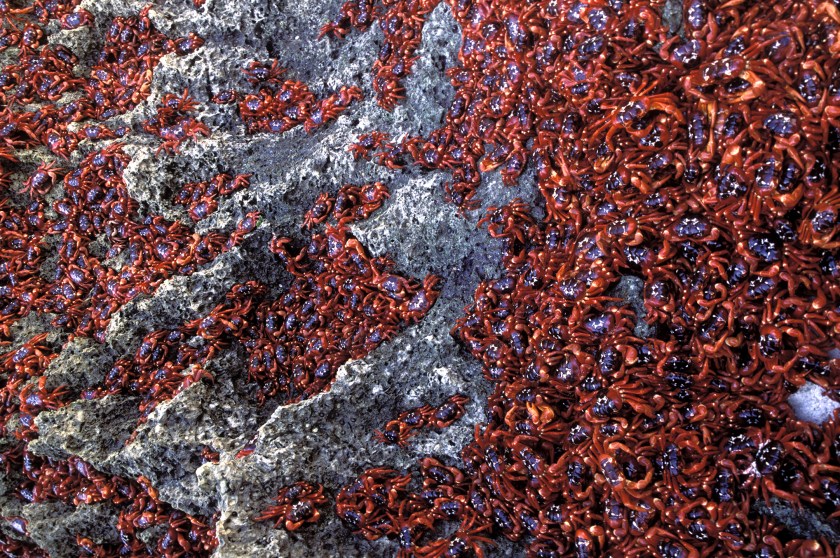
National park officials in Australia are fighting fire with fire, pitting invasive species against one another, to protect a major tourist attraction in one of its island territories.
An infestation of yellow crazy ants (yes, that’s their real name) have killed off millions of land crabs on Christmas Island, particularly devastating the famous red crab population. Now, Parks Australia is hoping a wasp from nearby Malaysia can save the day.
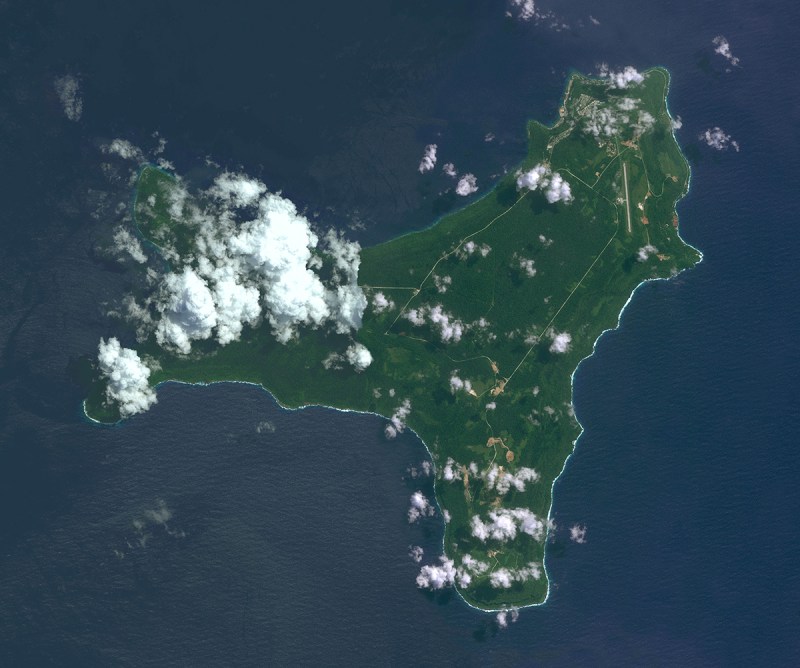
Often referred to as the “Galapagos of the Indian Ocean,” Christmas Island is known for its rich and distinct biodiversity, especially its land crab population. Coconut crabs, robber crabs (the largest of their kind), and a variety of other pincer-equipped critters dot the island, but it’s the red crabs and their mass migration that is the island’s trademark. Each March, the red crabs emerge from their subterranean dwellings in full force to lay their eggs—becoming moving carpets of crimson on the island (demonstrated in the video below).
Red crabs are not only awe-inspiring, but they are also a keystone species, which means the threat to the crab population posed by the yellow crazy ants is one to the entire ecosystem of Christmas Island. Serving a similar function to worms, the crabs are a necessary part of the island’s delicate balance, because they clear the forest of dead vegetation and help aerate the soil by burrowing underground.
Accidentally introduced to Christmas Island between 1915 and 1934, the yellow crazy ants grew into super-colonies—each containing billions of ants by the 1990s—spreading across hundreds of acres. By 2002, the invasive ants had taken over 6,000 acres on the island, two-thirds of which were federally protected land. Particularly brutal, the ants kill the crabs by spraying acid into their eyes and joints. The paralyzed crabs then die from dehydration, since they use gills to breathe, and eventually end up as ant food.
The yellow crazy ant infestation is particularly harmful during the famous crab migration, because many crabs survive to return and populate the potentially ant-free areas they originated from. Competing with and preying on other animals as well, the invasive ants cause a whole host of peripheral issues such as killing trees, reducing the overall health of the rainforest, and paving the way for other invasive species like the giant African land snail.
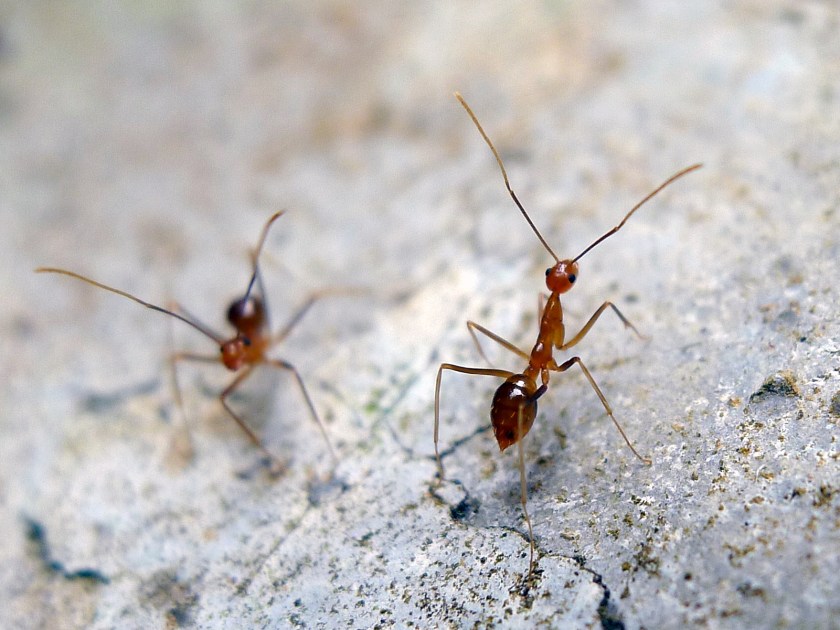
To correct this, Parks Australia hopes to eradicate the yellow crazy ants’ primary food source by releasing micro-wasps, two-millimeter-long flying insects, on Christmas Island. The tiny bugs are supposed to prey on the “yellow lac scale” insect, yet another invasive species, which helps produce honey dew, which the crazy ants feed on. Micro-wasps lay their eggs inside the yellow lac scale insects and once their eggs hatch, the larvae kill off the yellow lac scale by feeding on it. Since the main food supply for the ants is produced by the yellow lac scale insect, getting rid of one will eliminate the other.
Experts have been intervening in the yellow ant infestation since 2001, but the continued fight has been costly and time-consuming. Hijacking nature to correct human errors like invasive species, a technique known as biocontrol, could be a cost-effective way to solve the problem. After years of research in conjunction with La Trobe University, Parks Australia officials are hopeful about this new plan—given that small-scale testing showed the infestation reduced by 95 percent over a month. Already used as biocontrol agents in mainland Australia, the micro-wasps are a close relative of insects indigenous to Christmas Island.
All of these factors combine to make the scientists more comfortable with the premise of biocontrol given the extensive history of these types of interventions backfiring (learn more about that here). In fact, one of the unsuccessful precedents was identified by Parks Australia as an example of what they hoped to avoid. “We’re a long way from the days of the cane toad, which was released in Australia with very little scientific testing—these days biological control is carefully planned and controlled,” officials said in a public statement.
It will likely take years to assess whether the introduction of the micro-wasp helped save the red crab, because breeding, distributing, and strategically releasing the insects takes time. During that time, though, the ecosystem will be closely monitored by teams of experts from Parks Australia and La Trobe University.
To learn more about biocontrol on Christmas Island, click here. You can also find out more background info in the video below.
This article was featured in the InsideHook newsletter. Sign up now.














